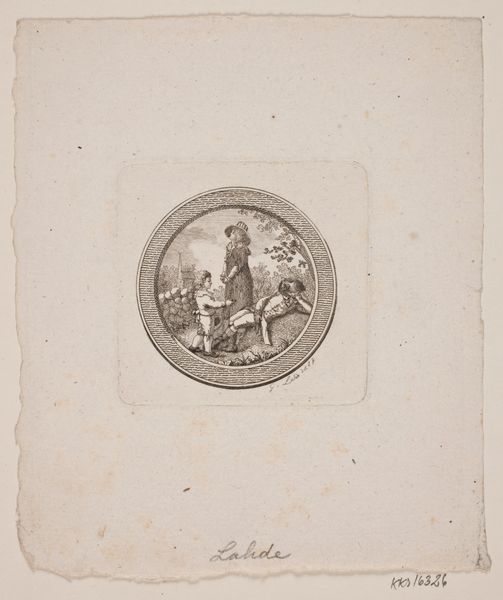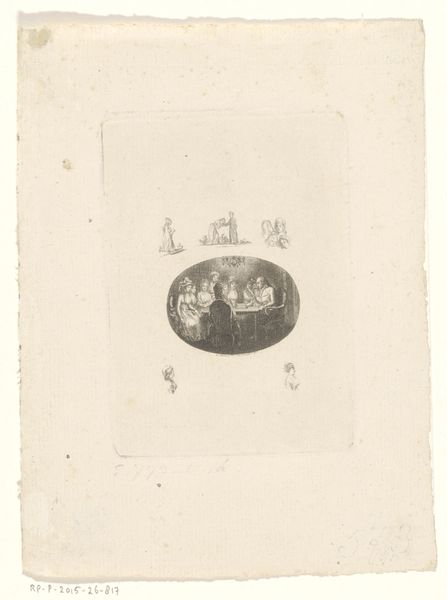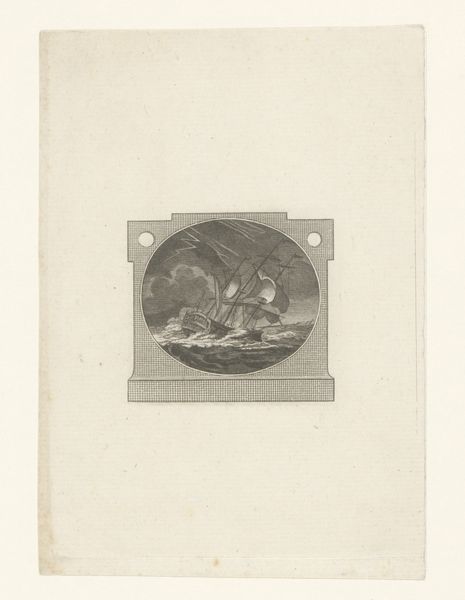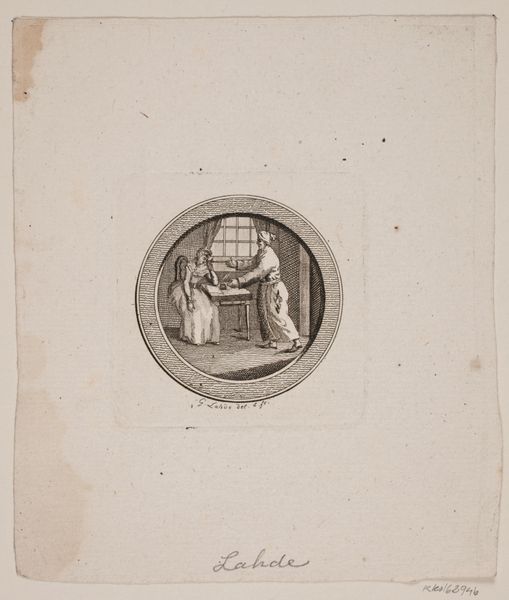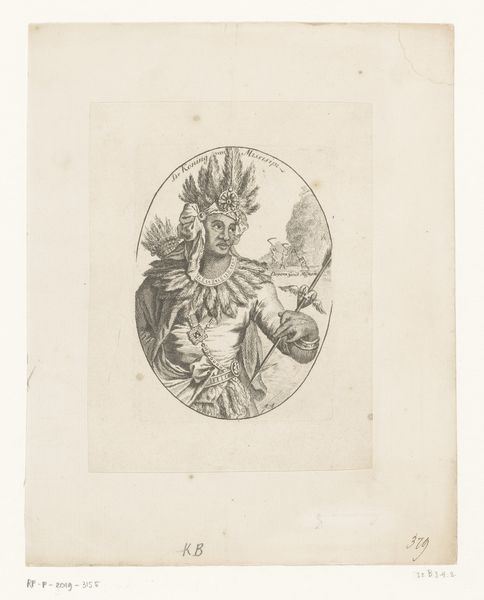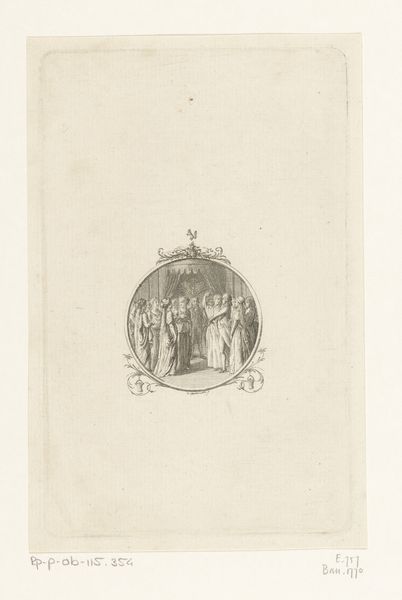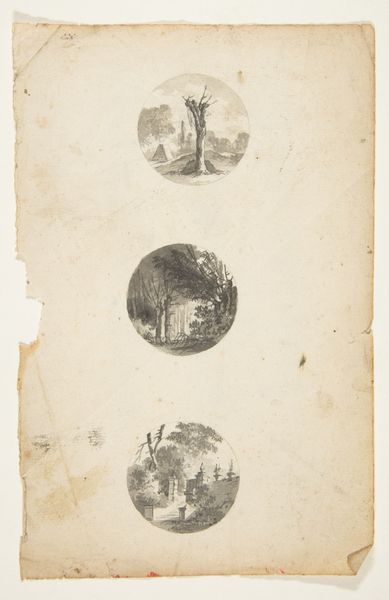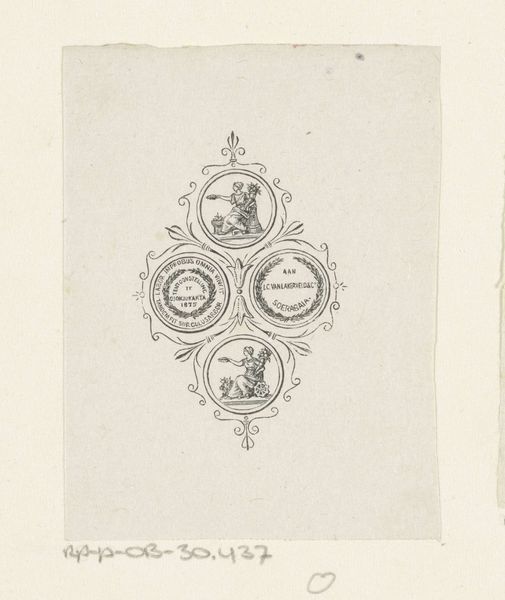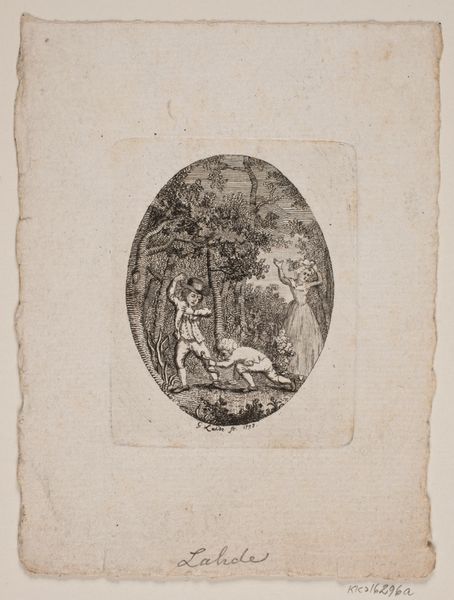
print, engraving
#
neoclacissism
# print
#
genre-painting
#
engraving
Dimensions: 75 mm (height) x 63 mm (width) (plademaal)
Editor: This is "A Feast, one of three Tonde vignettes" by Gerhard Ludvig Lahde, made in 1792. It’s an engraving, and I’m struck by how small and intricate it is. What do you make of this intimate scene? Curator: Looking at this engraving through a materialist lens, I'm immediately drawn to the process of its creation. Engraving involves skilled labor, the hand meticulously carving into a metal plate. The resultant print democratizes the image, allowing for wider distribution and consumption. Think about who had access to such images and the social contexts in which they were circulated and valued. Editor: So, it's not just about the people in the image, but about who got to see it and how it was made? Curator: Precisely. Consider the neoclassical style – how does it reflect the socio-political values of the late 18th century? The print medium, unlike painting, speaks to broader audiences beyond the elite. What implications do you think that has on notions of ‘high’ and ‘low’ art? Editor: That's interesting. I hadn't thought about the implications of prints being more accessible. So it challenges the idea that only paintings were "real" art, right? And also democratized the consumption of art for common people, rather than being exclusive to nobility with buying power? Curator: Exactly. The very act of creating multiple copies undermines the auratic uniqueness associated with painting, therefore, questioning traditional hierarchies of value. By analyzing the materiality of printmaking, we understand how art production and distribution shapes social and cultural meanings. Editor: That gives me a new way to look at prints. I used to see them as lesser versions of paintings, but it’s clear they had their own importance and impact. Curator: Indeed, they offer us valuable insights into the relationships between art, labor, and society. I've really appreciated your curiosity about production values influencing culture.
Comments
No comments
Be the first to comment and join the conversation on the ultimate creative platform.

